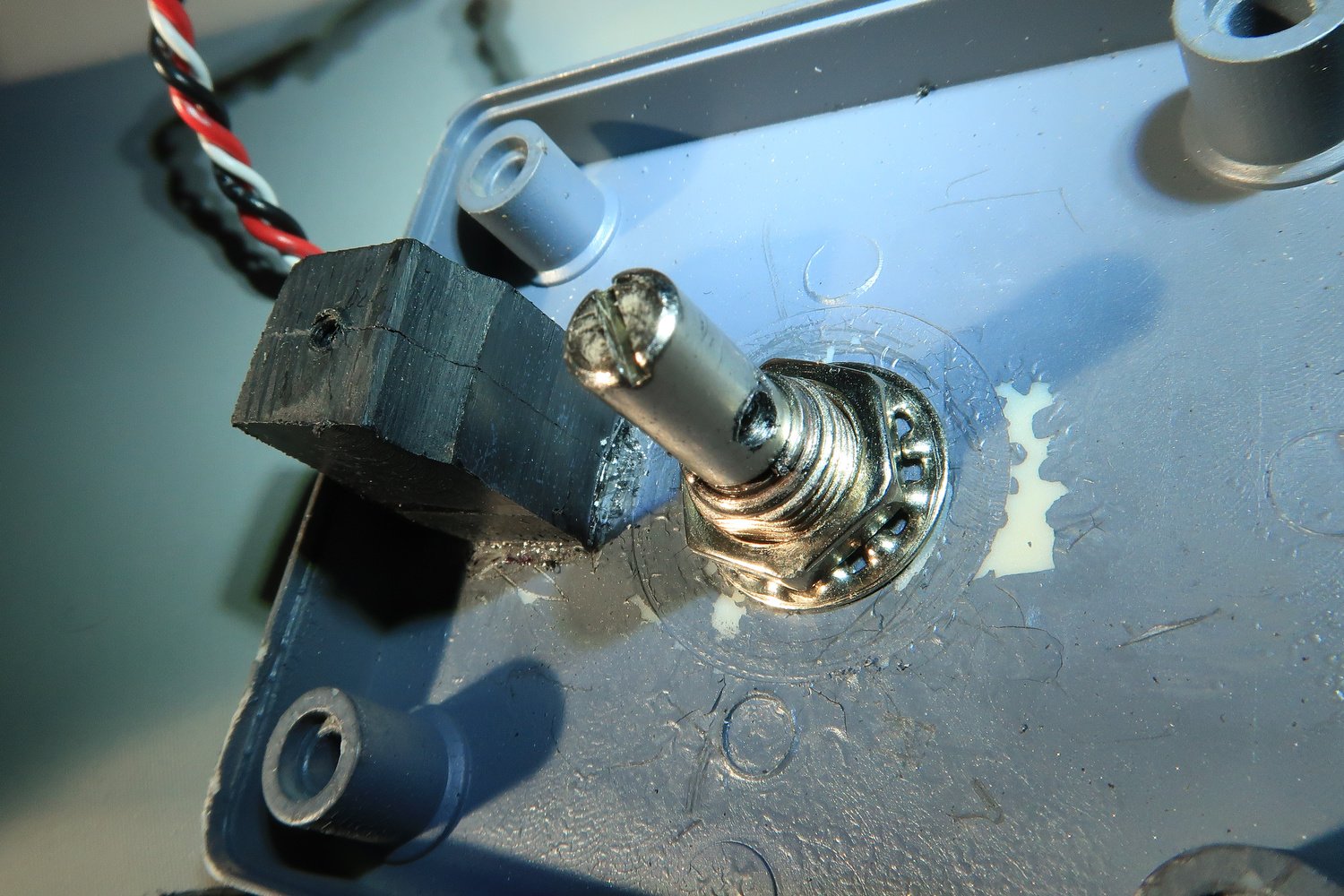A Bourne single-string potentiometer replaced the micro-buttons and previously used linear potentiometers. The string potentiometer is mounted to a custom-designed bracket on the First Officer side of the throttle quadrant. The bracket has been fabricated from heavy duty plastic.
A string potentiometer was selected ahead of a linear potentiometer because the former is not limited in throw; all the flap détentes can be registered from flaps UP through to flaps 40. This is not usually possible with a linear potentiometer because the throw of the potentiometer is not large enough to cater to the full movement of the flaps lever along the arc.
A 'string' is also very sensitive to movement, and any movement of the string (in or out) can be accurately registered.
Another advantage, is that it's not overly important where the potentiometer is mounted, as the string can move across a wide arc, whereas a linear potentiometer requires a straight direction of pull-travel.
Finally, the string potentiometer is a closed unit. This factor is important as calibration issues often result from dust and grime settling on the potentiometer. A closed unit for the most part is maintenance free.
The end of the potentiometer string is attached to the lower section of the flaps lever. As the flaps lever moves along the arc, the string moves in and out of the potentiometer.
The ProSim737 software has the capability to calibrate the various flap détentes. Therefore, calibration using FSUIPC is not required. However, if ProSim737 is not used, then FSUIPC will be needed to calibrate the flap détente positions.
Advantages
Apart from the ease of calibration, increased accuracy, and repeatability that using a string potentiometer brings, two other advantages in using the new system is not having to use a Pokeys 55 card or micro-buttons.
Unreliability of PoKeys 55 Interface Card
The PoKeys card, for whatever reason, wasn't reliable in the previous system. There were the odd USB disconnects and the card was unable to maintain (with accuracy and repeatability) the position set by the micro-buttons.
I initially replaced the PoKeys card, believing the card to be damaged, however, the replacement card behaved in a similar manner. Reading the Internet I learned that several other people, who also use ProSim737 as their avionics suite, have had similar problems.
Micro-buttons can and do fail, and replacing one or more micro-buttons beneath the flaps arc is a time-consuming process. This is because the upper section of the throttle quadrant must be completely dismantled and the trim wheels removed to enable access to the flaps arc.
Registering the Movement of the Flaps Lever in Windows
The movement of the flaps lever, prior to calibration must be registered by the Windows Operating System. This was done using a Leo Bodnar 086-A Joystick interface card. This card is mounted in the Throttle Interface Module (TIM). The joystick card, in addition to the flaps lever, also registers several other button and lever movements on the throttle quadrant.
Final Call
The rebuild has enabled a more reliable and robust system to be installed that has rectified the shortfalls experienced in the earlier system. The new system works flawlessly.
Acronyms and Glossary



















































